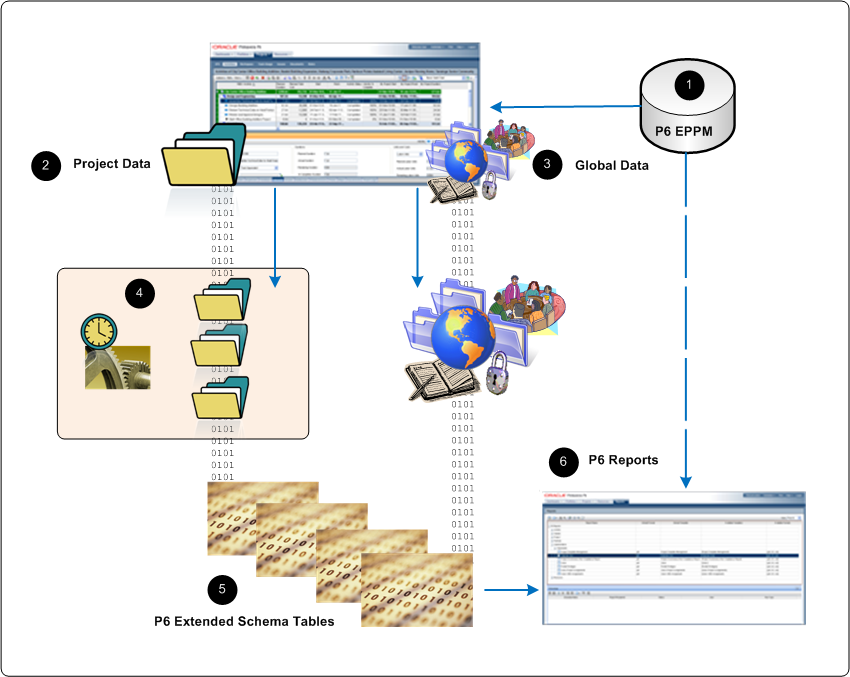To achieve near real-time reporting, usage, and analysis date, you can configure P6 to publish to tables that store updated data, including calculations and summary data. These tables also create views for generating reports. The P6 data is split into two general categories: project data and global data. Project data includes all information about your projects, including aggregates and calculations. Global data includes enterprise data, as well as resource and role, portfolio, and security data. The image below encapsulates the key concepts in the publication and reporting process.

Table of Key Publication Services Concepts
Item | Description |
|---|---|
| EPPM Database: The EPPM database captures all the data your organization generates every second of every day. However, the raw data in the EPPM database is not structured for immediate reporting. |
| Project Data: You can configure P6 to publish a project based on publication thresholds. Based on the options you select, you can prioritize projects for publication in a queue. If necessary, you can manually add a project to the queue. |
| Global Data: You can configure services in P6 to schedule the publication of global data based on recurring intervals that you specify. If necessary, you can also immediately publish this data manually. |
| Project Queue: Projects publish in sequential order based on priority. Your administrator can control which projects are added to the publishing queue, when, and in what order. These options ensure the project data you need most is available for P6 in near real-time. |
| P6 Extended Schema Tables: The project and global services recalculate certain logical fields in the P6 EPPM database and store them as physical fields in the P6 Extended Schema tables so they are available for reporting and other purposes. Some fields in P6, such as durations, are calculated in real time as related field data is changed and are not stored in the database. Publication services recalculate these fields and store their values in the extended schema tables. Other fields, such as notebook topics, are not stored in the database in a format suitable for reporting. For these fields, publication services will convert them to a format more suitable for reporting. Note: For information about which tables are updated by the Publication Services, see the following knowledge management document: What PX tables are updated when running Global Scheduled Services or Publish Project [ID 1491245.1] https://support.oracle.com/epmos/faces/ui/km/DocumentDisplay.jspx?id=1491245.1 |
| P6 Reports: You can run reports directly against P6 Extended Schema table views. |